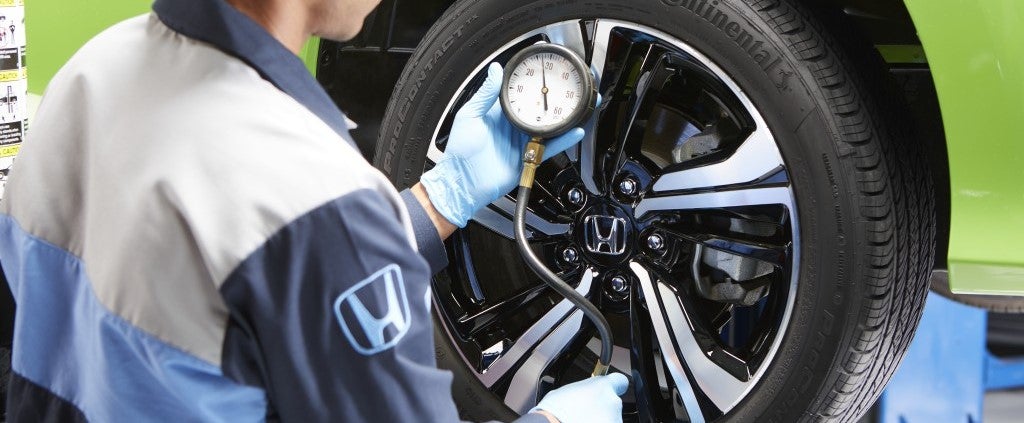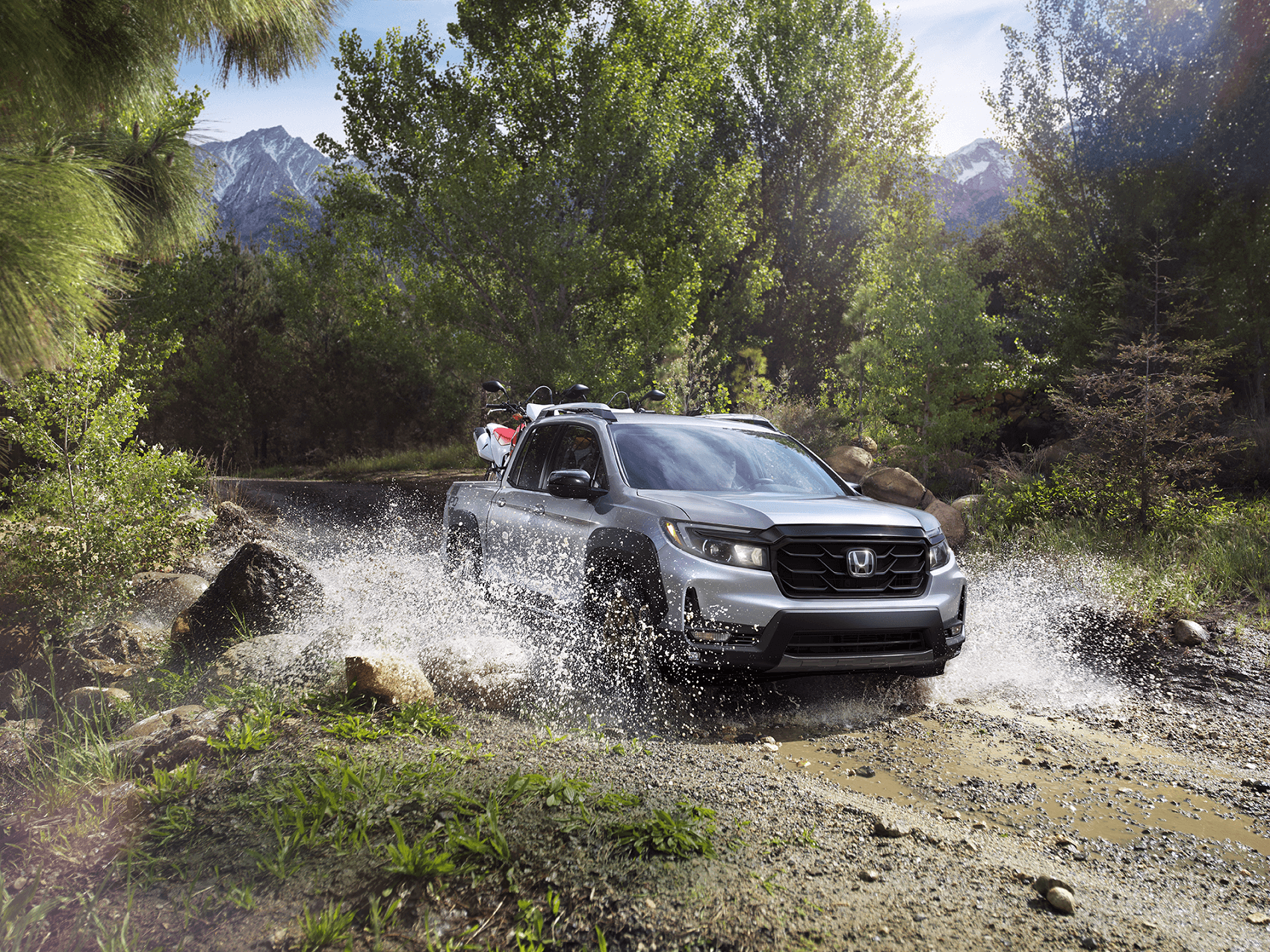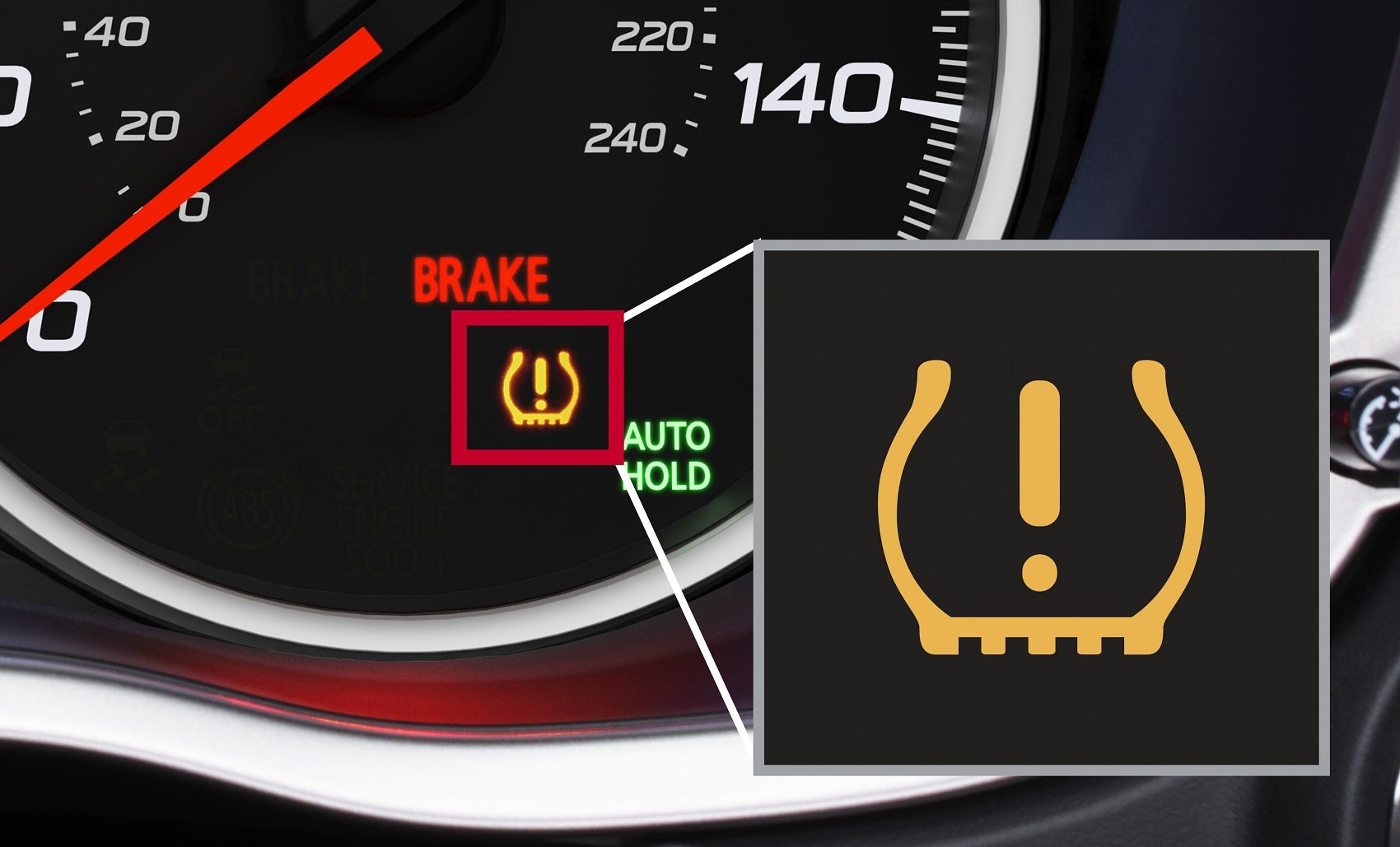What You Need to Know About Your Vehicle’s Tire Pressure

There may be cause for concern when seeing your tire pressure indicator luminate on your dashboard. But you should breathe in and remember that your tire pressure indicator can be triggered by a variety of reasons, including weather, road conditions, and of course, tire wear. Continue reading our helpful guide from Clinton Honda to learn what you need to know about your vehicle’s tire pressure!
Keeping Your Tires at Optimum Pressure

Knowing how tire pressure can affect gas mileage as well as your tire’s longevity are important components in your tire care. Driving on underinflated tires, for example, may offer a smoother ride and offer better handling, but will have a negative impact on your gas mileage and your tread wear. Underinflated tires will allow for a greater amount of tire surface to come in contact with the road. And while that improves your handling and ride, this added friction often leads to the tires overheating and tread separating, developing uneven/premature wear and in many cases may lead to blowouts.
And that’s not the only way underinflated tires will cost you money. According to the US Dept. of Energy: “For every 1 psi missing from your car's set of 4 tires, you lose 0.1 percent of your gas mileage. (Every psi lost also means that tires wear 10 percent faster.) By properly inflating your tires you can improve your gas mileage by 3.3 percent.” (departmentofenergy.gov).
On the other hand, overinflated tires are more prone to cause uneven wear and a harsher ride. Overinflated tires show symptoms such as a bouncy unstable ride, louder road noise, and poor handling, which are due to the majority of the road contact coming from a fraction of the overall tire surface. Over time, the tire sidewalls become harder, reducing the absorption of bumps and shocks from the road, and can ultimately cause tires to destabilize and blow out.
Weather’s Impact on Tire Pressure

Besides wear and tear, there’s a natural phenomenon that occurs every time the temperature changes, which also impacts your tires. That's because tires lose or gain 1-2 PSI (pounds per square inch) for every 10? change in temperature. It's not due to air escaping, but because the air inside the tire condenses taking up less space when it's cold. What causes low tire pressure in winter is different from what causes low tire pressure in summer. In the summer, however, the higher temperatures make these same molecules expand, thus overinflating the tire. That’s why tire pressure in summer vs. winter will often trigger the Tire Pressure Monitoring Sensors in your vehicle.
How to Find the PSI on a Tire
PSI, or Pounds Per Square Inch, indicates the optimum amount of air that your tires should be inflated to. So how do you know the correct tire pressure? Fortunately, you don’t need to be a math whiz to find out how much PSI a tire needs. Your vehicle’s tire PSI will be listed both in the owner’s manual and on the manufacturer’s sticker on the inside of your driver’s door.
What to Do When Your Tire Pressure Indicator Goes On

Since 2007, Tire Pressure Monitoring Sensors (TPMS) have been mandated in all vehicles in the United States. When your tire pressure is too high or too low, it’ll trigger the TPMS on your dashboard.
First thing you should do is to determine if your tire pressure is too high or too low. It is wise to keep a tire pressure gauge in your glovebox so you can verify your tire pressure yourself. If you have too much air in your tires, you can release some by pressing down on the center stem inside the tire air valve; and if you don’t have enough, you can add some at any air compressor.
And before you ask why my tire pressure light is still on after filling tires, know that it doesn’t automatically reset itself; you’ll need to reset the tire pressure indicator manually. While most vehicles have the reset button in the same location, we recommend you check the owner’s manual to make sure.

Without starting the car, turn the key to the “On” position. This will activate the accessories on your vehicle and your dash lights will illuminate. Your reset button is most likely beneath the steering wheel. Hold the reset button down until the light blinks three times; then release it. This should turn off the indicator on the dash.
While we all hope that you don’t experience issues with your tires, making sure your vehicle is safe for the road is our number-one priority. Stop in any of our locations and let our team help you make sure your tire pressure is at its best level. Our team at Clinton Honda has been serving the Hunterdon County, NJ, Buck County, PA, Bridgewater, Edison, Princeton, Hamilton, Somerset County, and Mercer County areas for the past 45 years. So, no matter what Honda model you drive, know that taking care of your tires will help keep you safer.
| Monday | 9:00AM - 7:00PM |
| Tuesday | 9:00AM - 7:00PM |
| Wednesday | 9:00AM - 7:00PM |
| Thursday | 9:00AM - 7:00PM |
| Friday | 9:00AM - 7:00PM |
| Saturday | 9:00AM - 5:00PM |
| Sunday | Closed |
| Monday | 7:00AM - 5:00PM |
| Tuesday | 7:00AM - 5:00PM |
| Wednesday | 7:00AM - 5:00PM |
| Thursday | 7:00AM - 5:00PM |
| Friday | 7:00AM - 5:00PM |
| Saturday | 7:00AM - 4:00PM |
| Sunday | Closed |
| Monday | 7:00AM - 5:00PM |
| Tuesday | 7:00AM - 5:00PM |
| Wednesday | 7:00AM - 5:00PM |
| Thursday | 7:00AM - 5:00PM |
| Friday | 7:00AM - 5:00PM |
| Saturday | 7:00AM - 4:00PM |
| Sunday | Closed |

